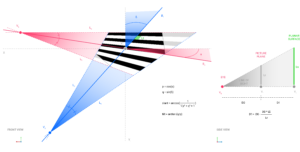Books
Book chapters and full contributions will be listed here as soon as preprints are made available online.
The Hypothesis of Greater Variance, or Why Considering Covert Responses in Human-Computer Interactions
Cutellic P. - in Brain Art, ed. Nijholt A., Springer 2023
Coming Soon…
@bibtex Download Link
Journals
Journal contributions for work-in-progress and full papers will be listed here as soon as preprints are made available online.

Study Protocol for Randomized Trials on Visual ERP for multiclass discrimination in CAAD applications
Cutellic P., Qureshi N.K. - in BMC Trials, 2022 (Work-In-Progress)
The proposed study aims to observe the detection of Event-Related Potentials’ components and correlated neural phenomena under the visual presentation of complex stimuli and devise processing methods that would generalize their classification for applications in Computer-Aided Architectural Design, where visual complexity becomes an intrinsic feature of the tasks. It aims to investigate the cardinality of discriminative neural patterns correlated with the presentation of complex visual stimuli by detecting subcomponents of these neural phenomena using the designed system on short and prolonged periods of time and involving participants from architecture, visual arts or related fields. Subsequent results will bring to further discussion the role of visual experience in such system and the range it might address in the population segment.
@bibtex Download Link
Proceedings
Contributions to Conference and Symposium Proceedings will be listed here as soon as published versions are made available online.

An Inverse Modeling Method to Estimate Uncertain Spatial Configurations From 2D Information and Time-Based Visual Discriminations
Cutellic P. - in Proceedings of Design Modelling Symposium, Berlin, 2022 (Full Paper)
COMING SOON
COMING SOON